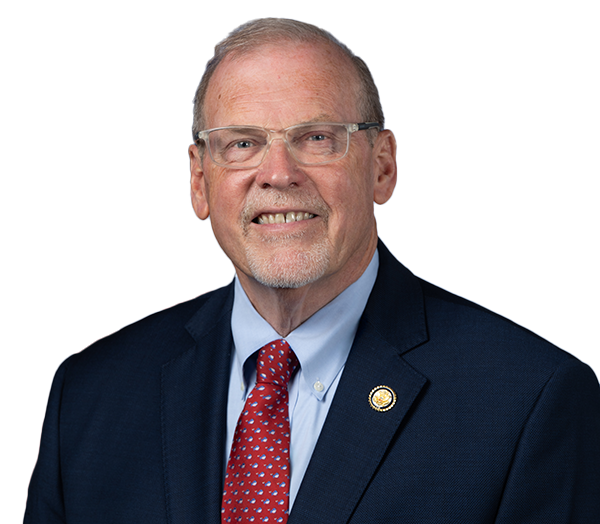Congressman Griffith's Weekly E-Newsletter 7.3.17
Monday,
July 3, 2017
|
Kevin Baird
(202-225-3861)
Independence and Southwest Virginia On July 4, we celebrate Independence Day, the anniversary of when 56 men pledged “[their] Lives, [their] Fortunes and [their] sacred Honor” by adopting the Declaration of Independence. We honor them on Independence Day, but in Southwest Virginia, their legacies can be found every day. One can simply look at a map to find them.* Two of the counties contained in the Ninth Congressional District are named after signers of the Declaration. Wythe County is named after George Wythe, who taught Thomas Jefferson law. His name appears first among Virginia’s signatures. Carroll County’s namesake, Charles Carroll of Carrollton, represented Maryland. He was the only Roman Catholic signer and the last survivor among the 56, living until 1832. The Declaration was a big step, but some had demanded independence before 1776. One of the boldest was Patrick Henry, who famously declared before the Second Virginia Convention, “Give me liberty or give me death!” He has two county names honoring him: Patrick and Henry. To make independence real, it needed more than the Declaration. It needed individuals who were willing to fight and, if necessary, die for the cause. Two such patriots are honored in our area by county names. Richard Montgomery led the invasion of Canada and died at the Battle of Quebec in 1775. Casimir Pulaski was a Polish count. Like the French-born Marquis de Lafayette and the Prussian Baron von Steuben, Pulaski was a European nobleman who was drawn to the American cause. As he wrote to George Washington, "I came here, where freedom is being defended, to serve it, and to live or die for it." Pulaski fell at the Battle of Savannah in 1779. William Grayson also fought in the war, serving as an aide to Washington and rising to colonel, but he survived the war to become one of Virginia’s first U.S. senators, and now has Grayson County named in his memory. It is not entirely clear which William Russell is honored by the name Russell County, the father or the son, but both were soldiers of the Revolution. The elder Russell’s service included the Battle of Point Pleasant, when frontiersmen led by Andrew Lewis defeated the Shawnee Chief Cornstalk and helped clear the way for settlement beyond the Appalachians. His son was one of the Overmountain Men, frontiersmen who rallied from hundreds of miles away to fight the British. Their victory at Kings Mountain helped turn the tide of the war in the South. The Abingdon Muster Grounds, where 400 of the militiamen began their journey, marks the northern trailhead of the Overmountain Victory National Historic Trail. Speaking of Andrew Lewis: in July 1776, he led an artillery assault on British forces located on Gwynn’s Island. His actions drove away the royal governor, Lord Dunmore, allowing Patrick Henry to become the first governor of post-independence Virginia. He does not have a county named for him, but there is Andrew Lewis Middle School in Salem. Then there is Washington County. George Washington led the Continental Army to victory against the powerful British Empire. Rather than seize power as a dictator, he went home. Later, he served as president of the Constitutional Convention and subsequently as our first president under the new Constitution. After two terms, he chose to return home once more. Truly, Washington was: “First in war, first in peace, and first in the hearts of his countrymen.” That description came from Washington’s colleague Henry “Light-Horse Harry” Lee, who, sure enough, is the namesake of Lee County. In Southwest Virginia, we are proud of our patriotic heritage. The names of the 56 signers of the Declaration, the other statesmen who worked for independence, and the soldiers who fought for it hold an honored place in our memory. But their legacy consists of more than names in history books or on maps. It is found in our democratic republic, in the freedoms we enjoy, and the great nation we have become. In London’s St. Paul’s Cathedral, a marker honors its famous architect, Christopher Wren, with an epitaph that translates from Latin, “If you seek a monument, look about you.” We could say the same about our Founding Fathers today in the nation they created: if you seek their monument, look about you. If you have questions, concerns, or comments, feel free to contact my office. You can call my Abingdon office at 276-525-1405 or my Christiansburg office at 540-381-5671. To reach my office via email, please visit my website at www.morgangriffith.house.gov. Also on my website is the latest material from my office, including information on votes recently taken on the floor of the House of Representatives. ### |
Stay Connected
Use the form below to sign up for my newsletter and get the latest news and updates directly to your inbox.

